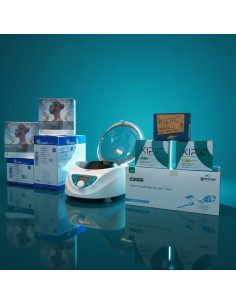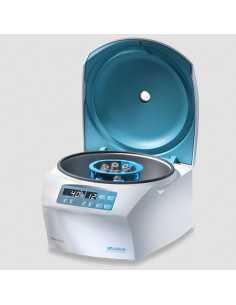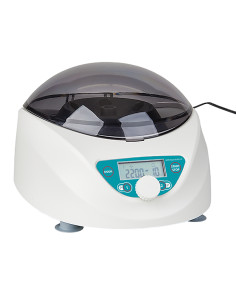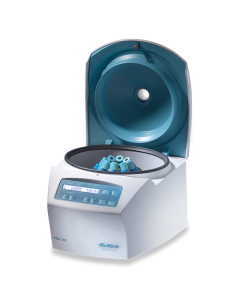Centrifuge
100400
PRP starter set consisting of:
1x Hettich EBA 200 centrifuge
2x PRP tubes | Vi PRP-Pro PU 10 pcs.
1x KIPIC® needle 25G x 42mm, PU 100 pcs.
1x KIPIC® Mesotherapy Needle 30G 4mm | PU 100 pcs.
1x KIPIC® Mesotherapy Needle 32Gx4mm | PU 100 pcs.
1x Mediware disposable syringes 5ml 3-piece Luer-Lock sterile (PU 100 pcs.)
1x Safety Blood Collection...
immediately available
€1,772.00
PRP Starter Set | SERVOspin Evolve – Complete package for professional users
100451
The PRP Starter Set | SERVOspin Evolve contains all components for precise and reproducible PRP processing.
The set is ideal for medical practices, aesthetic treatments, and laboratories that prefer compact, quiet, and reliable devices.
Contents:
1× SERVOspin Evolve centrifuge 6×15 ml
2× Vi PRP-PRO tubes | 10 pcs.
1× KIPIC® 25G × 42 mm | 100 pcs....
immediately available
€1,199.00
Centrifuge Hettich EBA 270
100359
Hettich EBA 270 is a small centrifuge with swing-out rotor, which is especially suitable for medical practices. Centrifuge conventional laboratory tubes to 15 ml at a maximum speed of 4,000 rpm. This corresponds to an RCF of 2254. Due to their 90° rotating rotor, they are particularly suitable for centrifuging laboratory tubes with separating gel.
immediately available
€1,365.00
DUO PRF/PRP centrifuge - Class IIa medical device for PRP and PRF therapies
100401
Certified Class IIa medical device – specifically designed for PRF and PRP therapies.
Maximum speed of 4500 RPM and RCF up to 2490 x g for precise and safe blood preparation.
Quiet operation at only 56 dB – ideal for use in quiet clinic or practice environments.
User-friendly controls with pre-set programs and easy parameter adjustments.
Highest...
immediately available
€1,999.00
SERVOspin Evolve benchtop centrifuge – 6×15 ml angle rotor – for PRP preparation
100416
Quiet benchtop centrifuge with 54° angle rotor, 6×15 ml
Speed: 300–5000 rpm; max. RCF: up to 2,600 g
Digital time/speed preselection, RCF display
Brushless motor, imbalance control
Electronic lid lock
Scope of delivery: Rotor & adapter set
Application: Centrifugation of blood collection tubes; PRP workflows according to tube/protocol...
immediately available
€831.81
Centrifuge Hettich EBA 200
100347
Big performance for the small lab.
The Hettich EBA 200 small centrifuge is a practical laboratory centrifuge for small sample volumes.
*Information on the calculation of the delivery date
immediately available
€1,295.00
PRP Power Kit Pro - your complete set for professional PRP treatments
100399
This set includes:
1x DUO Centrifuge2x PRP Tubes | Vi PRP-Pro VPE 10 pcs1x KIPIC® Needle 25G x 42mm, VPE 100 pcs1x KIPIC® Mesotherapy Needle 30G 4mm | VPE 100 pcs1x KIPIC® Mesotherapy Needle 32G x 4mm | VPE 100 pcs1x Mediware Disposable Syringes 5ml 3-part Luer-Lock Sterile (VPE 100 pcs)1x Mediware Disposable Syringes 2/3ml 3-part Luer-Lock Sterile (VPE...
immediately available
€2,399.00











